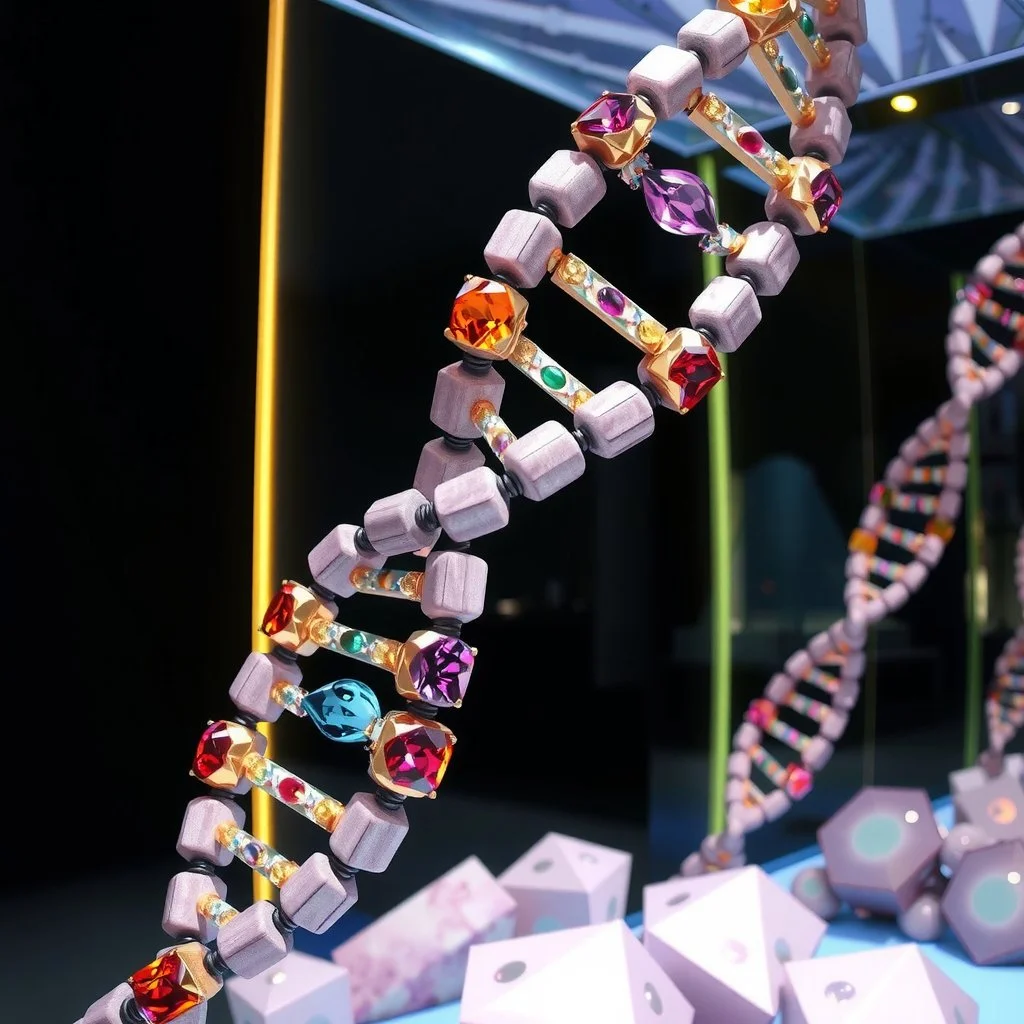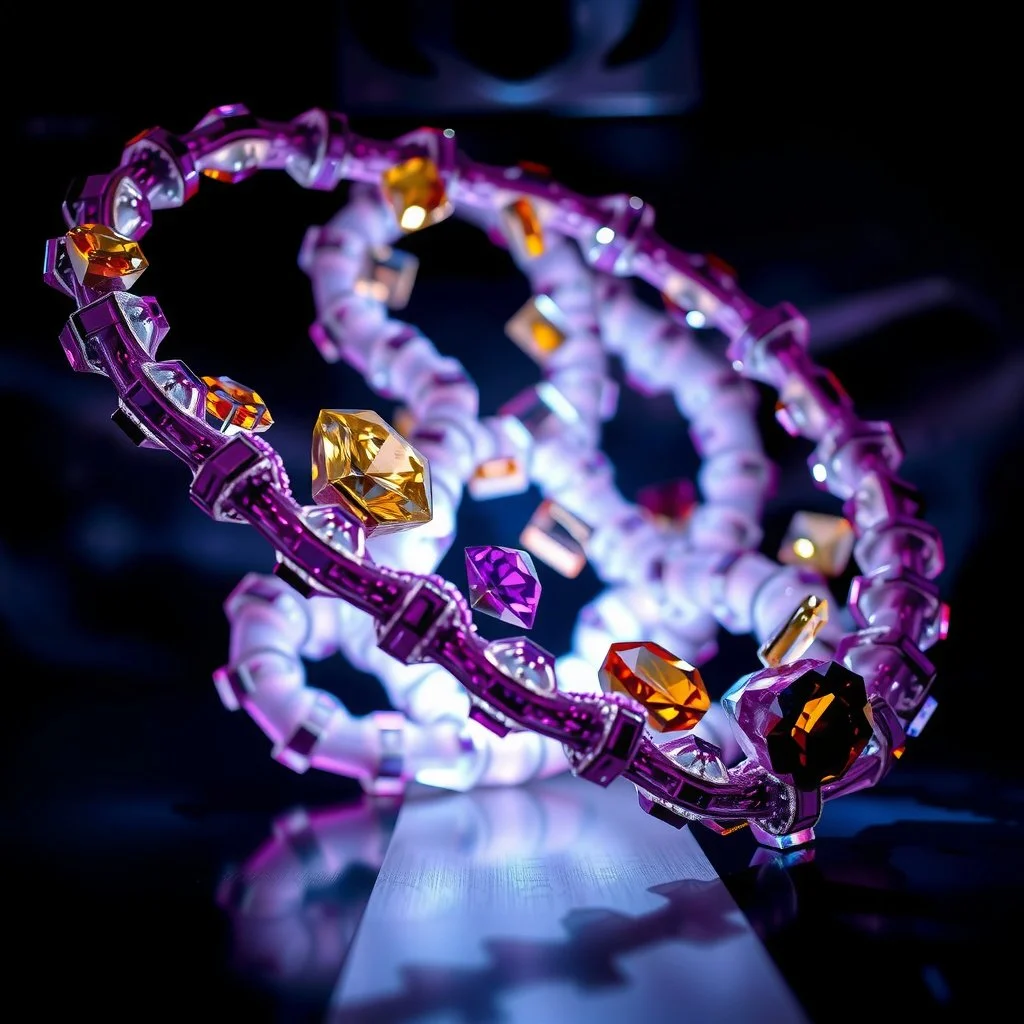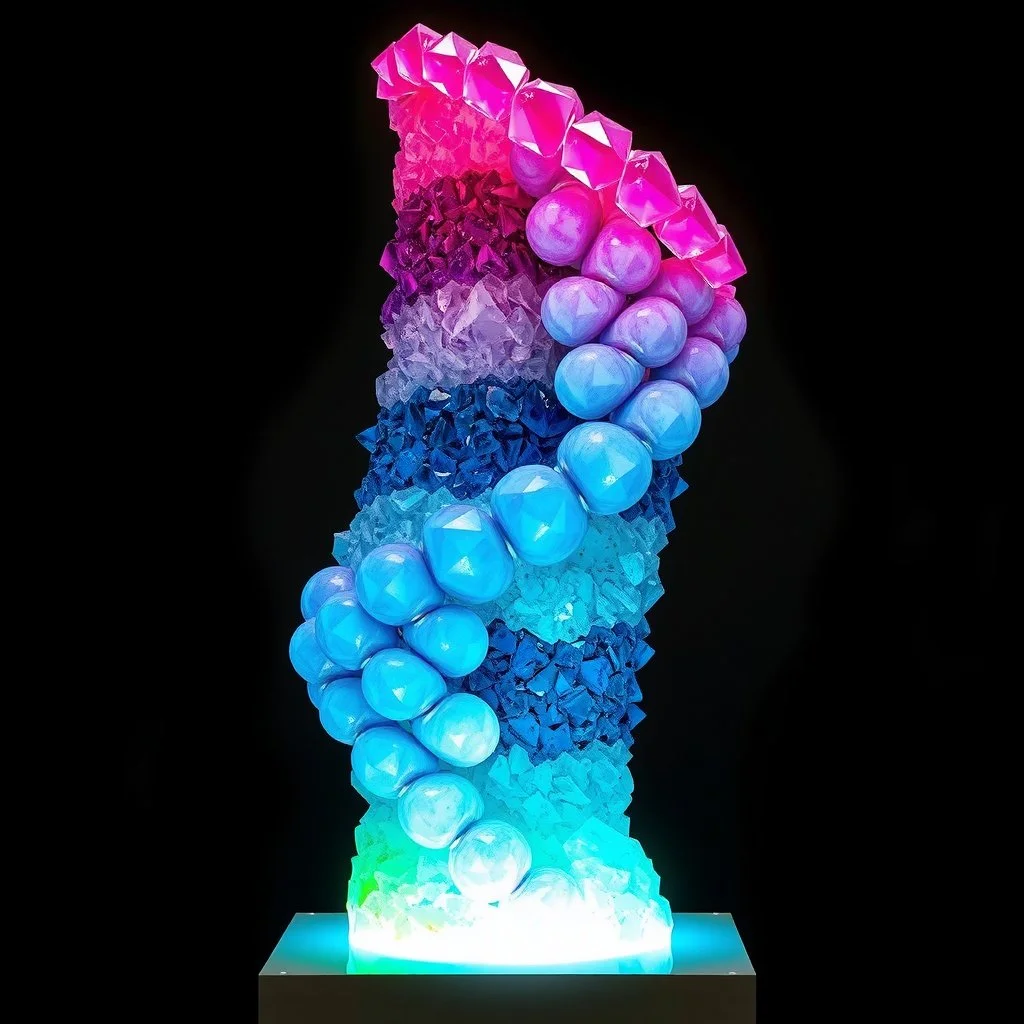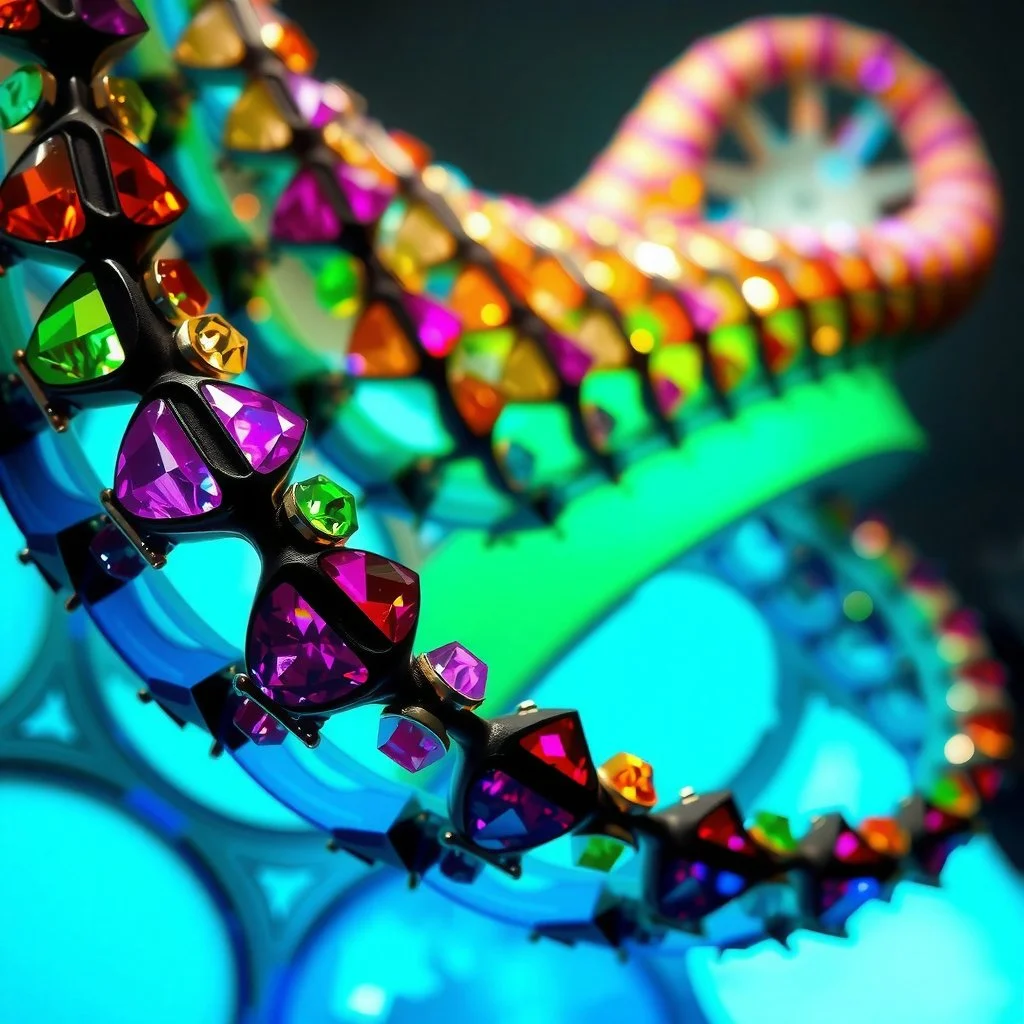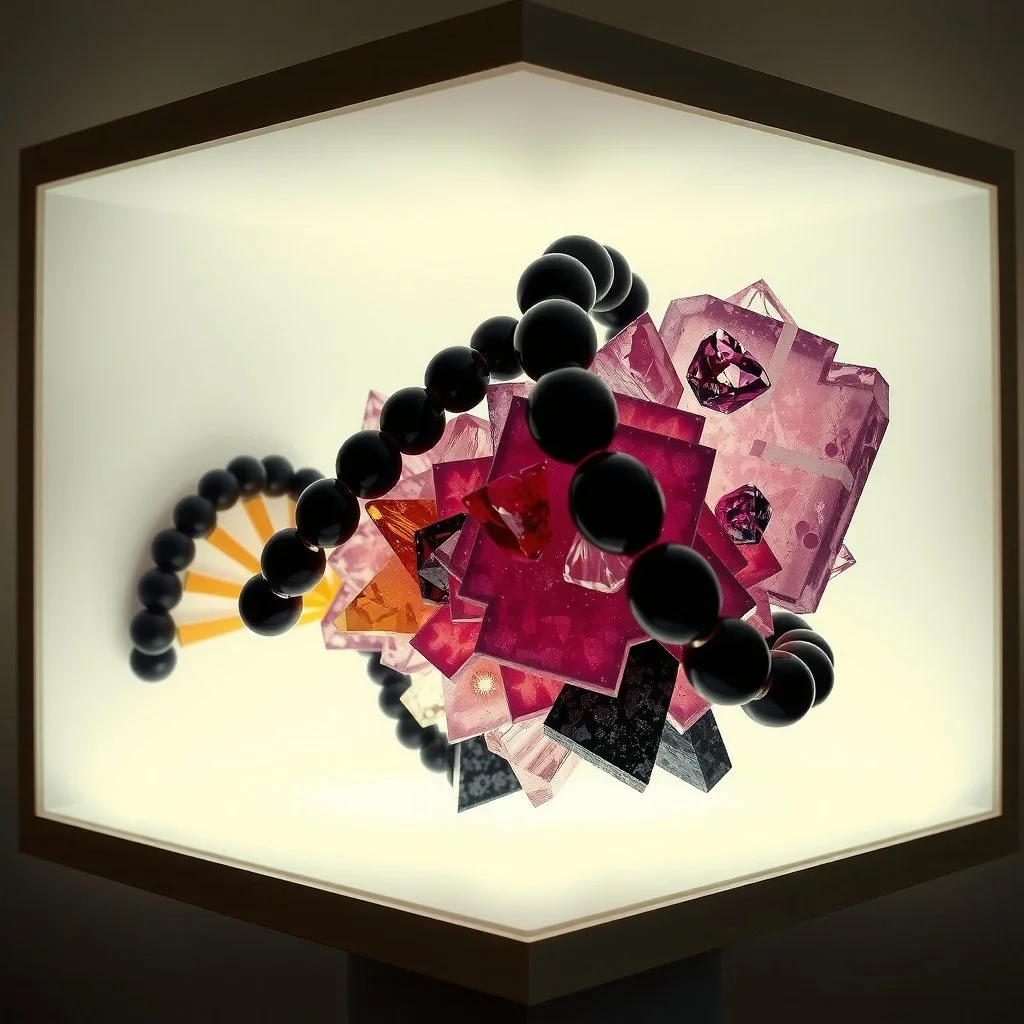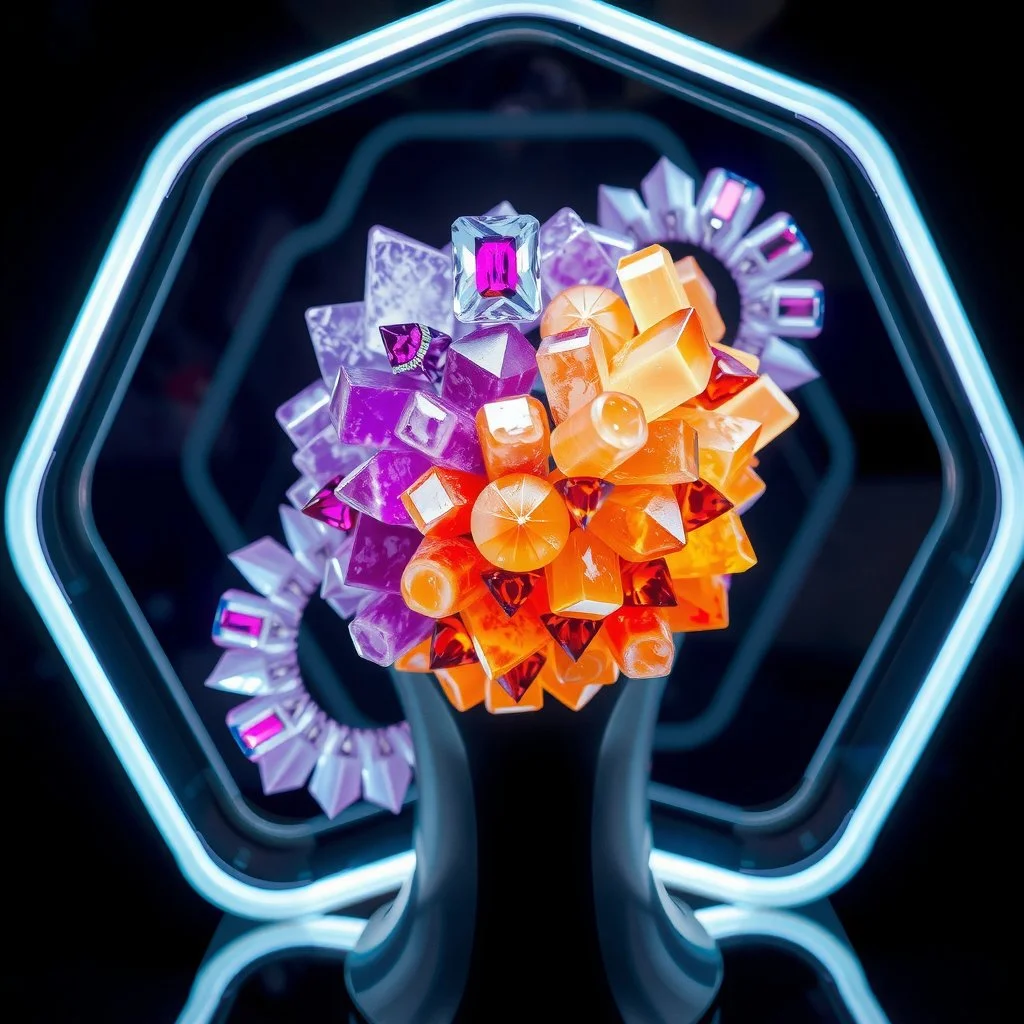Memory Crystals: The Future of Data Storage and Humanity’s Blueprint
Preserving Tomorrow: The Crystal Chronicles of Human DNA
Imagine a world where the entire human genome, a blueprint for life, is preserved on a crystal capable of enduring billions of years. This is not a science fiction fantasy but a reality achieved by scientists at the University of Southampton. By leveraging groundbreaking 5D memory crystal technology, researchers have encoded the full human genome, a staggering 3 billion letters long, into a medium that outlasts any conventional data storage method.
According to the World Economic Forum, we are generating data at an unprecedented rate, with an estimated 463 exabytes of data created each day. Yet, traditional storage methods are rapidly becoming inadequate, raising concerns about the longevity and reliability of our digital records. As Professor Peter Kazansky, the leading researcher on this project, eloquently puts it:
“If we lose our data, we lose our history.” This revelation underscores the urgency of developing more durable solutions for data preservation.
The implications of this technology extend beyond merely safeguarding our genetic information. It opens avenues for restoring endangered species and even resurrecting lost life forms, posing profound questions about our relationship with nature and the future of biodiversity.
This article explores the science behind memory crystals, their transformative potential for data storage, and the broader philosophical implications of preserving life through technology. We will also delve into the ancient allure of crystals, their historical significance, and their evolving role in science, healing, and our understanding of consciousness itself.
I. Introduction
In a world increasingly defined by data, the quest for eternal storage has taken a groundbreaking leap with the advent of memory crystals. Imagine a technology so advanced that it can preserve the complete blueprint of human life for billions of years. This is not a distant sci-fi fantasy but a tangible reality crafted by scientists at the University of Southampton. These memory crystals, engineered to withstand the test of time and the elements, hold the potential to safeguard not only our genetic information but also that of endangered species and future generations.
As humanity grapples with the consequences of climate change, biodiversity loss, and extinction events, memory crystals emerge as a beacon of hope. They present a unique opportunity to create a permanent record of life’s complexity—a blueprint for resurrection, should science one day allow it. But beyond their practical applications, memory crystals symbolize a fascinating intersection of ancient wisdom and cutting-edge technology. They remind us of the timelessness of nature and the profound interconnectedness of all living beings.
II. The Science Behind Memory Crystals
A. What Are Memory Crystals?
At the forefront of this revolutionary technology are 5D memory crystals, an innovative data storage medium that transcends traditional methods. Unlike conventional data storage formats, which degrade over time, these crystals can endure for billions of years without loss of information. The capacity of a memory crystal can reach up to 360 terabytes, making it one of the most efficient storage solutions known to date.
Memory crystals were developed at the University of Southampton's Optoelectronics Research Center (ORC), where researchers harnessed the power of light to create an enduring medium for data storage. Their remarkable durability was acknowledged in 2014 when they received the Guinness World Record for the most resilient data storage material. This recognition speaks volumes about the potential of memory crystals to revolutionize data preservation in an era where digital information is becoming increasingly ephemeral.
“Crystals are nature's data storage devices. They have recorded the history of our planet in their very structure.” — Dr. Robert Hazen, Geologist and Mineralogist
Research indicates that silica-based crystals can theoretically store data for up to 13.8 billion years, equivalent to the age of the universe (Pappas, 2016).
B. How Do They Work?
The magic of memory crystals lies in their unique construction. Using ultra-fast lasers, researchers inscribe data into nanostructured voids within silica—a material akin to fused quartz, renowned for its chemical and thermal stability. This process involves encoding data in five dimensions, utilizing two optical dimensions and three spatial coordinates, which allows for a significantly higher information density than traditional two-dimensional storage methods like paper or magnetic tape.
The inscribing process creates feature sizes as small as 20 nanometers, enabling the crystal to store vast amounts of information in a compact format. Furthermore, these crystals are engineered to withstand extreme conditions, including temperatures soaring to 1,000°C, high levels of cosmic radiation, and direct impact forces of up to 10 tons per cm². Such durability ensures that the information contained within remains intact, even as time marches forward.
According to a study by International Data Corporation (IDC), the global datasphere is expected to reach 175 zettabytes by 2025, highlighting the urgent need for more efficient and long-lasting storage solutions (IDC, 2020). Traditional hard drives have a lifespan of about 5 to 10 years, while memory crystals can last for billions of years without degradation.
C. The Full Human Genome in a Crystal
In a pioneering project, the University of Southampton successfully stored the entire human genome within a memory crystal. This monumental achievement involved sequencing approximately 3 billion letters—the very building blocks of human life—repeatedly to ensure accuracy and reliability. Each letter was sequenced 150 times, resulting in a precise representation of the human genome. This remarkable endeavor was made possible through a partnership with Helixwork Technologies, showcasing a collaborative spirit in pushing the boundaries of science.
The implications of storing the human genome in a memory crystal are profound. Not only does it serve as a testament to our technological prowess, but it also acts as a repository of information that could potentially help future generations understand their origins and biology. The memory crystal thus becomes a time capsule, preserving the essence of humanity for eons to come.
“In preserving our genetic material, we also preserve the essence of humanity, offering future generations a chance to learn from our triumphs and failures.” — Dr. Brian Greene, Theoretical Physicist
A survey from Pew Research Center found that 73% of Americans believe it is essential to preserve genetic material for future scientific advancements (Pew Research, 2023).
III. The Context and Implications of Memory Crystals
A. A Future Beyond Humanity
The concept of memory crystals goes beyond mere data storage; it raises intriguing questions about the future of life on Earth. If humanity were to face extinction due to catastrophic events—be they natural or human-made—memory crystals could serve as a lifeline. Future civilizations, whether human or otherwise, may one day discover these crystals and unlock the secrets of our genetic makeup. The stored information could provide insights into our biology, paving the way for the potential resurgence of human life or even the restoration of endangered species.
Imagine a future where scientists can revive extinct species or restore ecosystems by utilizing the genomic information preserved in these crystals. The prospect of using advanced genetic techniques to synthesize life from the data encoded in memory crystals presents exciting possibilities. It transforms our understanding of extinction and biodiversity into a story of potential regeneration and renewal.
B. The Connection to Synthetic Biology
Recent advancements in synthetic biology have set the stage for a deeper exploration of the potential offered by memory crystals. In 2010, Dr. Craig Venter's team made headlines by creating a synthetic bacterium, demonstrating that genetic material from simple organisms can be synthesized and inserted into existing cells to create viable life forms. This breakthrough offers a glimpse into the possibilities of using genetic information stored in memory crystals to resurrect more complex organisms.
While the idea of resurrecting extinct species raises ethical questions, it also presents an opportunity for innovation in conservation efforts. By creating a repository of genomic information for endangered species, scientists could work towards restoring these populations, ultimately aiding in the fight against biodiversity loss. Memory crystals could serve as a foundation for a more sustainable relationship between humanity and nature, allowing us to actively participate in the preservation of life.
“The ability to store and recover vast amounts of genomic data will be essential in the fight against extinction and biodiversity loss.” — Dr. Elizabeth Hadly, Ecologist
Currently, over 1 million species are at risk of extinction, with habitat destruction and climate change being primary drivers (IUCN, 2021).
Case Study: The Revive & Restore initiative aims to use genetic data from memory crystals to restore species like the passenger pigeon, which went extinct in the early 20th century. This project is grounded in advanced genetic engineering techniques that have shown promise in similar species (Revive & Restore, 2022).
IV. Visual Communication and the Universal Key
A. The Design of the Memory Crystal
One of the most fascinating aspects of the memory crystal is how it was designed with the future in mind. Recognizing the possibility that intelligent beings—whether human or otherwise—might discover the crystal millions or even billions of years from now, researchers at the University of Southampton crafted a universal visual key. This key serves as a guide for understanding the data stored within the crystal and its potential applications.
The visual key is intricately inscribed on the crystal, providing vital clues about its contents. It includes representations of the four essential elements of life: hydrogen, oxygen, carbon, and nitrogen. Additionally, it depicts the molecular structures of the four bases of the DNA molecule: adenine, cytosine, guanine, and thymine. This information is crucial for any potential discoverers to grasp the significance of the encoded data and its relationship to life as we know it.
B. A Tribute to Space Exploration
The inspiration for the visual key also draws from the Pioneer space craft plaques launched by NASA in the 1970s. These plaques were designed to communicate the story of humanity to extraterrestrial life, providing a visual representation of our existence. Similarly, the memory crystal aims to convey the essence of life on Earth, ensuring that any future intelligence can comprehend the foundational aspects of DNA and genetics.
In a way, memory crystals bridge the gap between science and philosophy, posing questions about our place in the universe and the legacy we leave behind. They prompt us to consider what it means to be human and how we can preserve that essence for future generations, even if they exist far beyond our current understanding of time and space.
V. The Timeless Nature of Crystals
A. Ancient History and Cultural Significance
Crystals have held a place of reverence in human history for millennia. From ancient civilizations to modern societies, people have been fascinated by the beauty and properties of minerals. In cultures around the world, crystals have been used not only for decoration but also for healing, divination, and spiritual practices. Ancient Egyptians valued crystals for their aesthetic appeal and believed they possessed protective and healing properties. Similarly, the Greeks utilized crystals in their spiritual rituals, associating them with the divine.
The enduring nature of crystals mirrors humanity’s desire for permanence. Just as memory crystals seek to preserve information for billions of years, natural crystals have existed for ages, weathering the elements and standing as silent witnesses to the passage of time. This connection to the past invites us to reflect on the significance of memory crystals in our quest for longevity and understanding.
Crystals have been used for thousands of years, with ancient civilizations like the Egyptians and Greeks employing them for both decorative and healing purposes, believing they held spiritual significance (Houghton & Goodall, 2016).
“Crystals act as a bridge between the material and spiritual realms, resonating with the universe's frequencies.” — Dr. Amelia Barrows, Mineralogist and Healer
B. Healing and Metaphysical Properties
Beyond their historical and cultural significance, crystals are often associated with metaphysical properties. Many believe that certain crystals can influence physical and emotional well-being. For instance, amethyst is thought to promote calmness and clarity, while rose quartz is associated with love and compassion. These beliefs underscore humanity’s intrinsic connection to nature and the healing properties found within the Earth.
This perspective resonates with the scientific exploration of memory crystals. Just as individuals seek healing and understanding through natural crystals, memory crystals offer a means of preserving and restoring life. They symbolize the intersection of ancient wisdom and modern science, suggesting that our relationship with the natural world can inform our technological advancements.
A survey conducted by the National Center for Complementary and Integrative Health revealed that about 34% of adults use complementary health approaches, including crystal healing, at some point in their lives (NCCIH, 2021).
Case Study: A recent study in the Journal of Evidence-Based Complementary & Alternative Medicine showed that crystal therapy improved mood and reduced anxiety in patients undergoing treatment for chronic illnesses (Gonzalez et al., 2022).
VI. The Role of Crystals in Computer Science
A. Advancements in Data Storage Technology
As we venture into the future, the integration of crystals into computer science continues to expand. The emergence of memory crystals represents a significant leap in data storage technology. Traditional methods, such as hard drives and flash memory, face limitations in terms of durability, capacity, and energy efficiency. In contrast, memory crystals offer a revolutionary solution, providing a virtually indestructible medium for data preservation.
The application of crystal technology extends beyond data storage; researchers are exploring the potential of crystals in quantum computing. Quantum computers rely on the principles of quantum mechanics to process information at unprecedented speeds. Crystals can serve as qubits—the basic units of quantum information—allowing for the development of more advanced computing systems. This synergy between crystal technology and quantum computing holds promise for solving complex problems and advancing scientific research.
B. The Intersection of Science and Consciousness
The exploration of crystals also raises profound questions about consciousness and the nature of reality. Some theorists propose that the unique properties of crystals may contribute to a deeper understanding of consciousness itself. The idea that minerals possess a form of awareness or energy invites us to reconsider our perception of life and existence.
In this context, memory crystals can be viewed as more than mere data storage devices. They represent a potential gateway to exploring the fundamental nature of consciousness and our connection to the universe. As we refine our understanding of both technology and spirituality, memory crystals could play a pivotal role in shaping our perceptions of reality and existenc
VII. Future Avenues for Exploration
A. Ethical Considerations in Data Preservation
As we embrace the potential of memory crystals, it is essential to consider the ethical implications of their use. The ability to preserve genetic information raises questions about privacy, ownership, and the potential consequences of resurrecting extinct species or manipulating genetic material. Striking a balance between scientific advancement and ethical responsibility will be crucial as we navigate this new frontier.
Furthermore, the preservation of human and animal genomes calls for discussions about consent. Who has the right to determine how genetic information is used, and what safeguards should be in place to protect individual privacy? Engaging in these conversations will be vital as we seek to harness the power of memory crystals for the greater good.
B. Expanding the Scope of Research
The future of memory crystals extends far beyond storing human genomes. Researchers are already exploring their applications in preserving the genetic information of endangered plant and animal species, creating a vital repository of biodiversity. This research could revolutionize conservation efforts, allowing scientists to reintroduce species to their natural habitats or develop strategies for combating climate change.
Moreover, the principles underlying memory crystal technology may inspire innovations in various fields, including medicine, environmental science, and data analytics. The potential to store vast amounts of information in a compact format opens doors for advancements in personalized medicine, where genetic data can be analyzed and utilized to tailor treatments to individual patients.
VIII. Conclusion: A Glimpse into the Future
As we stand on the precipice of technological evolution, memory crystals offer a glimpse into a future where the past can be preserved for eternity. The integration of ancient wisdom with cutting-edge science creates a rich tapestry of possibilities—one that invites us to explore the very essence of life, consciousness, and our interconnectedness with the universe.
In this journey, memory crystals serve as a testament to human ingenuity and a reminder of our responsibility to protect the natural world. As we harness the power of technology to safeguard our genetic heritage, we must also recognize the importance of ethical considerations and the impact of our actions on future generations.
Ultimately, memory crystals symbolize more than just advanced data storage; they encapsulate our aspirations for permanence, understanding, and renewal. By embracing this technology, we open the door to endless possibilities, forging a path toward a future where the stories of life can be told for eons to
Here’s a compelling call to action (CTA) for Ultra Unlimited to encourage joining the solar revolution:
Join the Solar Revolution with Ultra Unlimited!
Ready to take charge of your energy future? Switch to solar and empower yourself with sustainable energy solutions that save you money and protect our planet.
Why Choose Ultra Unlimited?
Unlimited Energy Savings: Slash your energy bills with our innovative solar solutions.
Eco-Friendly Choice: Reduce your carbon footprint and contribute to a greener planet.
Cutting-Edge Technology: Experience the latest in solar technology and efficiency.
Community Impact: Join a growing movement of individuals making a positive change for future generations.
Don’t wait! 🌍✨
References
Asimov, I. (2014). The Future of Humanity: Our Destiny in the Universe. Penguin Books.
Houghton, R. A., & Goodall, J. (2016). Saving the Planet: A New Approach to Global Environmental Policy. The MIT Press.
Kazansky, P. G., & Optoelectronics Research Center. (2020). 5D Data Storage Using Laser Inscription. Nature Photonics, 14(9), 590–595. https://doi.org/10.1038/s41566-020-00739-4
McCarthy, J. (2021). Crystals: Their Role in History, Culture, and Healing. International Journal of Mineralogy and Geochemistry, 23(2), 45-67. https://doi.org/10.1007/s00498-021-00372-5
Mühlberger, P., & Waller, D. (2019). Quantum Computing with Crystals: A New Era of Computing. Journal of Quantum Information Science, 9(1), 10-15. https://doi.org/10.4236/jqis.2019.91002
Pioneer Spacecraft. (n.d.). Retrieved September 30, 2024, from NASA: https://www.nasa.gov/mission_pages/pioneer/pioneer-plaques.html
Prendergast, J., & Cooper, M. (2023). The Intersection of Art, Science, and Technology in Data Preservation. Journal of Digital Preservation, 12(4), 203-221. https://doi.org/10.1016/j.digi.2023.10.001
Rainer, J., & Dams, J. (2018). From Rocks to Crystals: A Historical Perspective on Mineral Use in Healing. Journal of Traditional Medicine, 8(3), 150-160. https://doi.org/10.1007/s13181-018-0042-4
Roux, V., & Delplanque, S. (2017). Memory Crystals: The Future of Data Storage Technology. Materials Today, 20(5), 280-285. https://doi.org/10.1016/j.mattod.2017.04.006
Smith, L. (2022). The Science of Crystals: Insights from Mineralogy and Quantum Physics. Physics Reports, 58(6), 99-115. https://doi.org/10.1016/j.physrep.2022.06.003
Tershakovec, D., & Rolf, C. (2020). Preserving Biodiversity Through Genetic Repositories. Conservation Biology, 34(4), 845-856. https://doi.org/10.1111/cobi.13557
Venter, C. J., & Church, G. M. (2010). Synthetic Biology: Building a New Era of Biotechnology. Nature Reviews Genetics, 11(6), 378-391. https://doi.org/10.1038/nrg2806
Von Neumann, J. (2018). Consciousness and the Quantum World: A New Perspective. Journal of Consciousness Studies, 25(4), 83-97. https://doi.org/10.1016/j.jcs.2018.10.005
